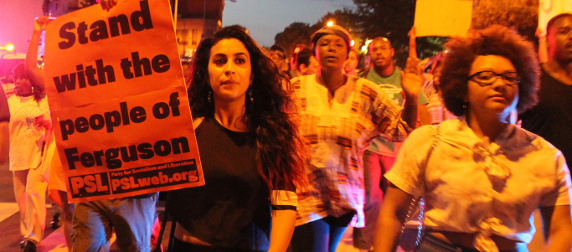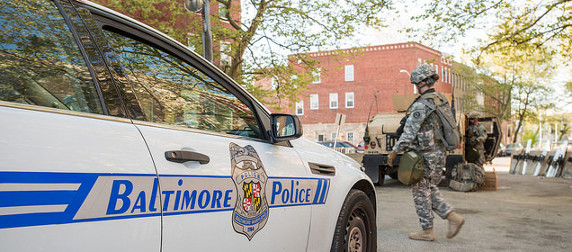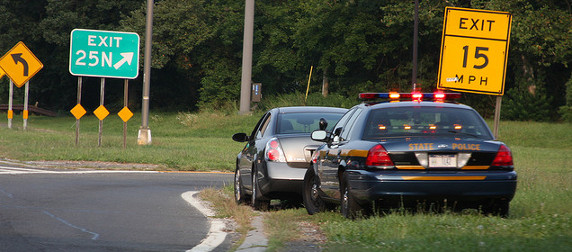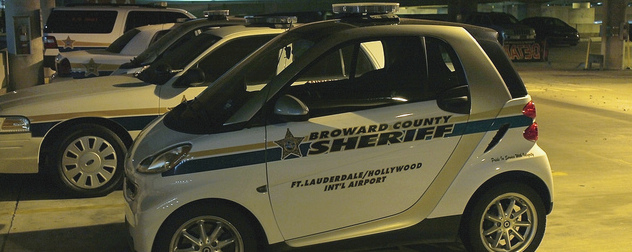I hate to say it, but relations between police and a sizable segment of the public have gotten so bad that a story about a wrongfully issued traffic ticket actually left me feeling relieved.
Such is the world in which we live nowadays. The motorist, John Felton, was pulled over by an officer of the Dayton (Ohio) Police Department in mid-August. He captured the stop on video, which he later posted to his Facebook page. In the video it is clear that both Felton and the officer, although frustrated, are consciously trying to avoid alarming one another or escalating the situation. Felton objected to the stop calmly and respectfully; the officer, equally calmly, asked for identification from both Felton and his passenger. He declined to argue about whether the stop was justified, but did give Felton a citation for allegedly making an improper left turn.
No one was arrested or injured, which is obviously a good thing. But that doesn’t mean such a stop is acceptable. It still amounts to an unconstitutional stop and “frisk” (confined here to the cop peering into the vehicle) on wheels.
The unidentified officer told Felton he had been pulled over because he did not signal at least 100 feet before making a turn, though he did acknowledge when pressed that Felton had signaled. Felton also pointed out that the officer had been following him for quite some time before that. When he asked why he was being followed, the officer replied, “Because you made direct eye contact with me and held on to it.”
Felton’s reaction to this justification was rightly incredulous. As a statement issued by the city of Dayton later confirmed, “making direct eye contact with an officer is not a basis for a traffic stop.” The statement also said that the Dayton Police Department was in contact with Felton, and that he had agreed to a mediated conversation with the officer to discuss the incident further.
While the unnamed officer should be disciplined for infringing on the rights of peaceful citizens, he probably shouldn’t be fired. On the other hand, the police chief - or whoever else pushed for this mediation - probably deserves to lose his job.
There is nothing to mediate here. Felton did nothing wrong, and certainly nothing that warrants a citation in the ordinary course of business in Dayton. Moreover, the officer clearly had no basis to suspect the unidentified passenger of a crime, and thus had no justification to demand the passenger’s ID in addition to Felton’s. Not only is making eye contact with a police officer not grounds for the reasonable suspicion necessary for a traffic stop, but sitting alongside a driver who allegedly made an improper left turn does not give rise to any reasonable suspicion of wrongdoing on the part of the passenger. For a simple traffic stop, a passenger is generally not required to identify him- or herself to an officer at all.
That the chief of the Dayton Police Department, Richard Biehl, apparently either does not know these boundaries or does not care to enforce them shows an absence of the skills necessary to command a police force at a time when officers and citizens are trying to set safe ground rules for contact between them.
This traffic ticket should have simply been cancelled. The officer should have been mildly disciplined and retrained to send a message to other officers on this force. And the chief of police, on behalf of his department, should have apologized to the motorist who was unduly inconvenienced.
While the sequence of events leading up to the stop was not on the video, we can reasonably imagine what might have happened. The cop followed the motorist closely for a time; Felton told the officer it was about two miles. Felton, approaching his destination, perhaps decided to determine whether the cop was following him in earnest or merely rudely tailgating. He might have signaled a turn at the last minute to see whether the officer, who had not signaled such a turn, would follow him or drive on. The cop then used what he perceived as an evasive maneuver as the basis for pulling Felton over. It might not have happened this way, but it easily could have.
Anyone who thinks this outcome is just should consider this scenario: An off-duty cop finds himself closely followed by a citizen on his way home from the police station. He tries the same maneuver and sees the citizen is still following him. What do you think happens next? My guess is that the officer would stop his car, check the disposition of his service weapon and confront the motorist who tailed him. It is hard to imagine that confrontation going well.
Although the streets and highways are open to everyone, most of us - not just off-duty cops - reasonably expect not to be followed on our way home, or on our way to visit our mothers, which is what Felton said he was doing when he was pulled over. What’s more, every pointless encounter like the one in Dayton has the potential to end in tragedy. The chase in Baltimore earlier this year that ended with Freddie Gray sustaining fatal injuries was said to have been triggered when Gray made sustained eye contact with police officers before running away. Felton himself mentioned Sandra Bland during the stop; her incarceration and subsequent death followed an alleged assault on an officer during a traffic stop in Texas.
And while we can’t know whether the unnamed officer had conscious or unconscious racial motivations, we can hardly blame those who wonder about it. So-called “investigatory” stops, which often escalate into impromptu interrogations and searches, are not distributed proportionally along racial lines.
Much like New York City’s ill-considered stop-and-frisk program, the intentions behind such traffic stops are immaterial. The truth is that motorists, like pedestrians, who aren’t doing anything wrong have a right to be free of unreasonable search and seizure, regardless of their license plate, mode of dress or skin color. Americans of color, especially black Americans, have good reason these days to be wary of police encounters even when they know they haven’t broken any laws.
The traffic stop in Dayton, thankfully, didn’t end in some horrific way. But Biehl and others who run police departments across the country need to make it their business to stop these pointless stop-and-frisks, whether they happen on foot or on the road.













September 4, 2015 - 3:18 pm
One point: during the course of a justified motor vehicle stop, a mere look into the vehicle is perfectly constitutional, and any contraband in plain view can be used against the owner of such contraband.
Editor’s Note: Craig Elkin is a retired police sergeant who served with the police department of Middletown, Connecticut. He is the brother of the author of this post.